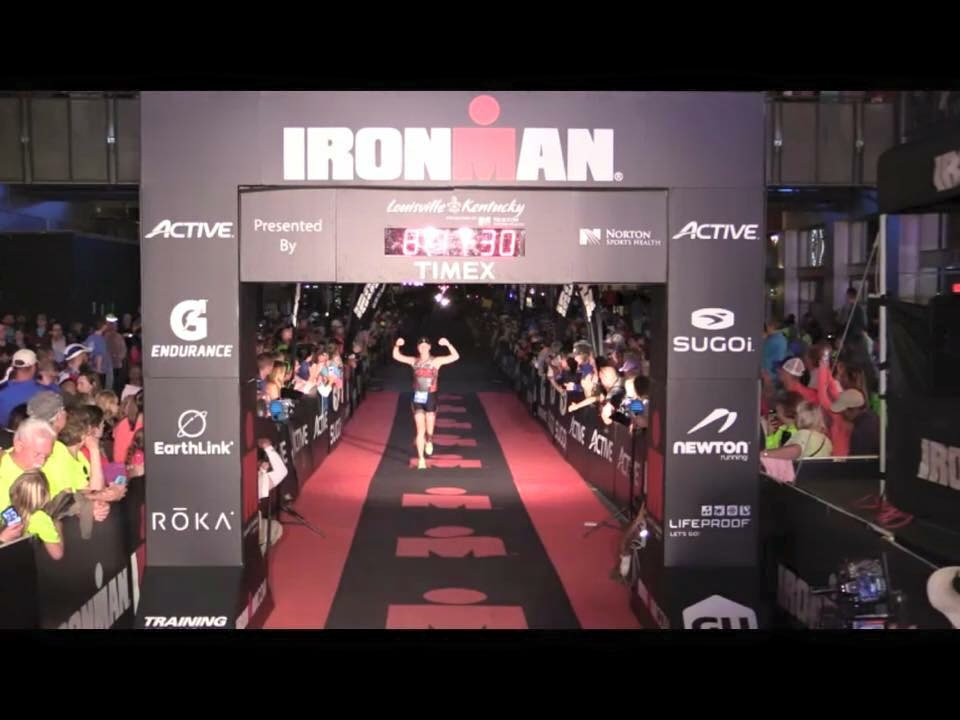
An Ironman is a 140.6 mile race that most would agree is the ultimate test of will and endurance. 2.4 mile swim, 112 mile bike, and 26.2 mile run--it's all a bit crazy isn't it? Well for the last year everyone in our office has been a witness to the preparation, skill, and unbelievable determination it takes to compete an Ironman Triathlon. My friend, and our co-worker Elise just finished her first and we all couldn't be more proud of her. I thought this might be a good opportunity to both congratulate Elise, as well as use her as an example of cross-training at its extreme.
We often have patients that are runners, this may consist of anyone from someone training for their first 5K to competitive club triathletes like Elise. The runner may have a variety of lower leg complaints depending on their level of conditioning. A few of the most common are anterior knee pain and medial tibial stress syndrome (shin splints). Anterior knee pain is pain over the front of the knee in the area of the knee cap also know as the patella.
The patella is positioned in the front of the knee and has attachments for the quadriceps tendon at its superior portion and the patellar tendon at its inferior. The patella is involved in the flexing and bending of the knee, and with repetitive motions both the patella and the groove it sits in can become irritated or damaged. As you can image running is one of these activities, actually any activity that involves flexing your knee puts pressure on the knee cap. Squatting, kneeling, jumping, running, wearing high heels mom all put increased pressure on your patella. In order to treat pain involving the patella you have to first find the reason for the pain. This can include weakness in muscle groups around the knee, wear in the cartilage on the patella, patella alignment issues, or even modifying the very activities we love to do.

Medial Tibial Stress Syndrome (MTSS) is what many of know as shin splints. Symptoms include a painful inflamed area along the inside border of the shin bone (tibia). Often the person experiencing these symptoms has recently changed their level of activity in some way. I personally experienced MTSS in high school basketball after running on our hard court/hallways. As medical providers we always have to remember to rule out a stress fracture in anyone that has the symptoms of MTSS. There is too much overlap in the symptoms and if you ignore MTSS it can lead to a stress fracture. If x-rays are negative for fracture treatment will often consist of ice, rest, stretching, possible physical therapy, and modification of activities, as well as a good foot wear analysis.

Standing with her finisher medal
I always tell you about the conversations I have on a daily basis with patients. Activity modification is another common topic. This is where Elise comes to light again--Swim, Bike, then Run. I am a strong supporter of cross-training to allow the knee to recover after activity. Runners love to run! However, for the life of a knee taking miles off of the joint with none pounding exercise like swimming, elliptical, and cycling is important. I consider these "knee friendly" cardio conditioning. Perhaps if more of our runners turned into triathletes we would have less knee pain. Will we ever know?
Next Blog Topic: Osgood Schlatter Disease-It Hurts When I Jump!

Elise crossing the finish line.
Sources:http://orthoinfo.aaos.org/topic.cfm?topic=a00407
http://orthoinfo.aaos.org/topic.cfm?topic=A00680
The information on this blog is intended for informational and educational purposes only. It is not intended to be used in place of medical advice. If you have orthopedic issues that need to be addressed please contact your physician.


